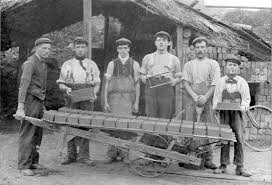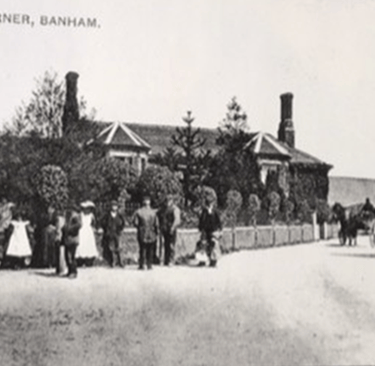Banham Brick Making
History of Banham Part 2
Sarah Howard
6/4/20252 min read


Banham and Brick Production
As mentioned in my previous blog, the village sign shows the two industries for which Banham was well known- cider production and brickmaking. Banham village grew in size and prosperity during the eighteenth and nineteenth century as a result of these two successful industries. It is likely that many residents from the village and surrounding area would have earned their livelihood from these occupations. In 1845, directories record that 150 people were employed in the making of bricks, tiles, drainpipes and cider flagons.
The Banham Heritage Register states:
‘Hunt’s Corner, named after the owner of one of two separate works, which in the nineteenth century supplied bricks and tiles over a large area of South Norfolk.’
Brickmaking took place at the top of Church Hill, to the west of the village, in the area known locally as ‘Hunts Corner’ - so called as in the Eighteen Hundreds, the principal producer of bricks was a Mr J Hunt.
The little row of terraced, redbrick cottages that line the Banham bypass were accommodation for the brickmakers and what is now Kiln House, was a pub called the Brickmakers Arms. There is also a Brickmakers Farm on Grove Road in whose garden the remains of brick kilns can still be found.
It is possible that the grand redbrick ‘Hunts Corner House’ may have been lived in by the owner of the brickworks. Many period houses and walls in the village and at Hunts Corner, are constructed of Banham redbrick, as is the small chapel in the cemetery on Church Hill.
Owner of the Rout’s cider business, Frederick R. Rout constructed the Garden of Eden pleasure gardens at Hunt’s corner in the 1930’3. They covered a seven-acre site of disused brick works and pits. The gardens contained an aviary, refreshment house (still in existence as a private house) and a romantic candlelit brick tunnel for courting couples to walk through. The fields surrounding the house still contain clues of the brick making industry. A walk across said fields, reveal faint evidence of undulations/shallow clay pits.
Before the firing of bricks, buildings in Norfolk and Suffolk were constructed of Clay lump. This East Anglian building method used large, unfired clay bricks set in clay mortar. This clay was often mixed with chopped straw. Older cottages in the village made using this process still stand strong today- a testament to the good quality of local natural materials and ancient building methods.
The clay found in Banham was noted to be of very good quality and contained the right percentage of iron oxide to make the distinctive red brick colour. In the present day, Banham gardeners can bear witness to still finding lumps of clay in their soil if they dig deep enough!


Brickmakers Arms Public House and Hunt’s Corner House, Hunt’s Corner.
